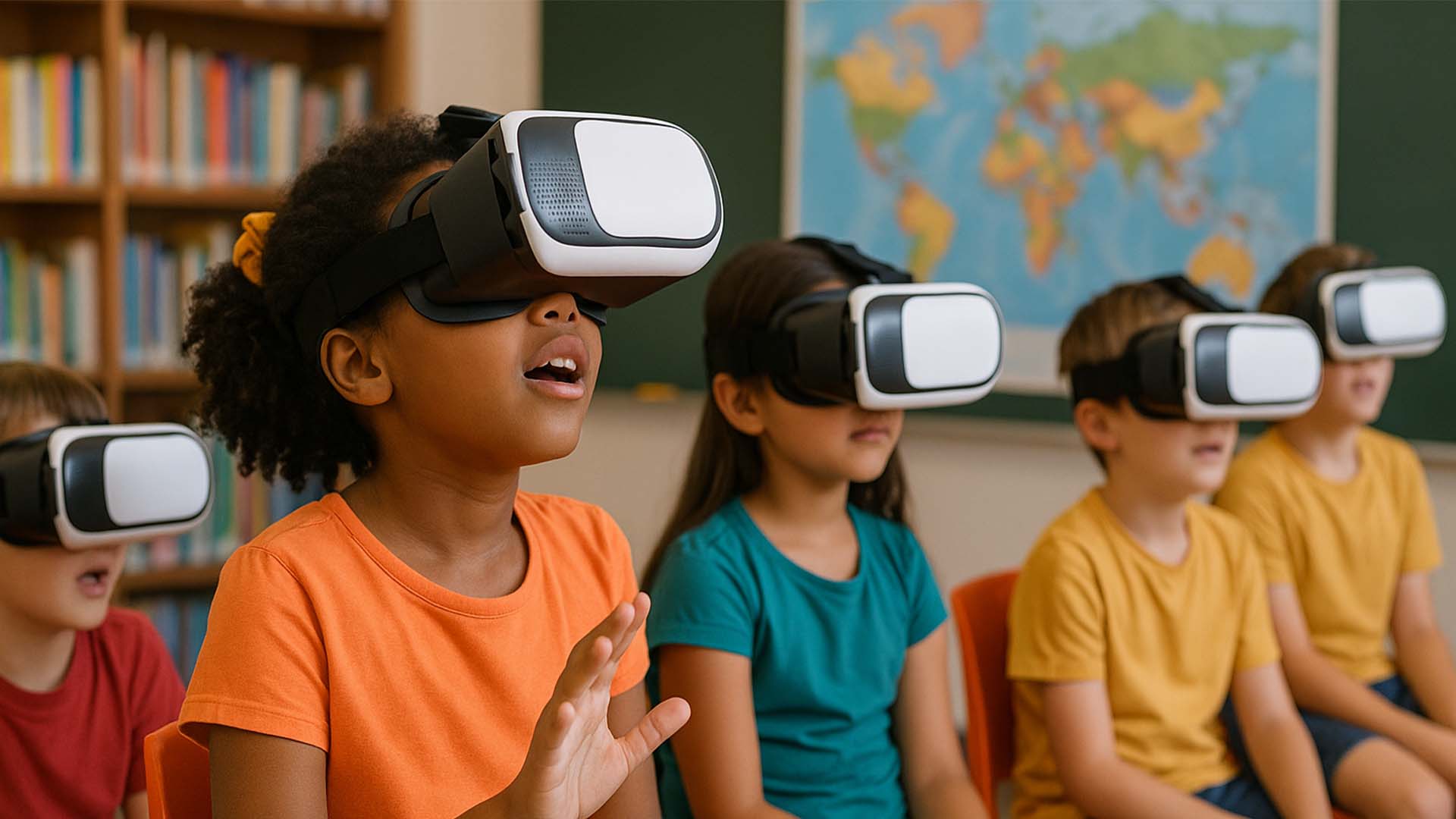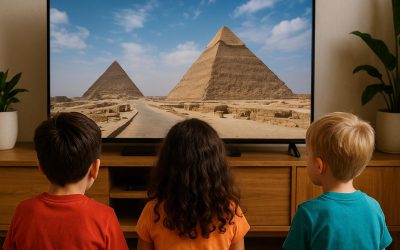Imagine exploring ancient Egypt, diving deep into the ocean, or even venturing into outer space, all without leaving your classroom or home!
This incredible possibility is becoming a reality through virtual field trips. In an increasingly digital world, these immersive experiences offer children unique opportunities to learn, discover, and connect with places and concepts far beyond their immediate reach.
This article will delve into what virtual field trips are, their many benefits for young learners, and how they are transforming education by making the world more accessible and engaging.
What are Virtual Field Trips?
A virtual field trip is an educational excursion that takes place virtually, often utilizing extended reality (XR) technologies. These experiences allow students to engage in experiential learning and explore various locations and concepts using immersive digital tools [1]. XR encompasses augmented reality (AR), mixed reality (MR), and virtual reality (VR), each offering different levels of immersion and interaction between the physical and digital worlds [1].
- Augmented Reality (AR): This involves a low level of virtuality, where digital images are overlaid onto the real world. For example, a student might use a mobile device to project an image of a dinosaur into their classroom or scan a plant to get detailed information [1].
- Mixed Reality (MR): MR offers a medium level of virtuality, with more lifelike interactions between physical and virtual objects. A student wearing a special headset might see a historical figure walking around their classroom and interacting with real-world elements [1].
- Virtual Reality (VR): This provides a high level of virtuality, immersing users in a completely computer-generated world. Students can put on a VR headset and explore ancient civilizations or distant planets as if they were physically there [1].
The Benefits of Virtual Field Trips
Virtual field trips offer a multitude of benefits for children, making learning more dynamic and accessible:
- Improved Learning Experiences: Virtual field trips can significantly enhance students’ understanding of complex concepts by providing fresh content, real-world examples, and expert insights from around the globe [1, 2]. They allow students to visualize and interact with subjects in ways that traditional methods cannot [3].
- Increased Engagement: For many students, virtual field trips are more engaging than traditional learning experiences. The interactive and immersive nature of these trips captures children’s attention and fosters a deeper interest in the subject matter [1, 2].
- Greater Accessibility: Virtual field trips break down geographical and financial barriers, offering access to experiences that might otherwise be impossible. This is particularly beneficial for remote learning environments or for students with physical limitations [1, 2]. Children can visit museums, zoos, historical sites, and even other countries from their homes or classrooms [2, 4].
- Collaboration Across Boundaries: These trips enable students to collaborate with peers from different regions and learn about diverse cultures and places, fostering a broader global perspective [1].
- Development of Social-Emotional Learning Skills: Engaging in virtual explorations can also provide opportunities for students to develop social-emotional learning skills, such as empathy, problem-solving, and critical thinking, as they navigate new environments and interact with virtual content [1].
Popular Virtual Field Trip Destinations
Many organizations and platforms offer free or low-cost virtual field trips to a variety of exciting locations. Children can explore:
- Zoos and Aquariums: Observe marine life and exotic animals up close.
- Museums and Art Galleries: Discover historical artifacts and famous artworks.
- National Parks and Natural Wonders: Experience breathtaking landscapes and learn about ecosystems.
- Historical Sites: Walk through ancient ruins or significant historical landmarks.
- Space Exploration: Journey to other planets or explore the International Space Station.
These experiences provide invaluable educational opportunities, making learning an adventure for every child [4].
Q&A for Parents and Kids
Q1: What is the main difference between Augmented Reality (AR) and Virtual Reality (VR)?
A1: The main difference is immersion. Augmented Reality (AR) overlays digital information onto your real-world view, like seeing a virtual dinosaur in your living room through a tablet. Virtual Reality (VR), on the other hand, completely immerses you in a simulated digital environment, making you feel like you are actually in a different place, often using a headset [1].
Q2: How can virtual field trips help my child learn better?
A2: Virtual field trips make learning more engaging and accessible. They allow your child to experience places and concepts that might be too far or expensive to visit in person. This hands-on, visual approach can help them understand complex topics more deeply, spark their curiosity, and make learning more memorable [1, 2].
Q3: Are virtual field trips only for school, or can we do them at home?
A3: Virtual field trips can be enjoyed both in school and at home! Many museums, zoos, and historical sites offer free virtual tours that families can explore together. They are a great way to learn and have fun as a family, expanding your child’s horizons from anywhere [2, 4].
Q4: Do virtual field trips replace real-life field trips?
A4: Virtual field trips are a wonderful supplement to real-life experiences, but they don’t fully replace them. While they offer incredible access and learning opportunities, they can’t replicate all aspects of a physical visit, like the smells, sounds, and tactile sensations. They are best seen as a powerful tool to enhance and broaden educational experiences [3].
Sources
- Educational, Engaging, Accessible: The Benefits of Virtual Field Trips | Kai XR
- 10 Reasons Why Virtual Field Trips Benefit Students | Banyan Global Learning
- Virtual Field Trips vs Traditional: Which is Better? | Professional Learning Board
- Exploring the World Through Virtual Field Trips | Octane Seating








0 Comments